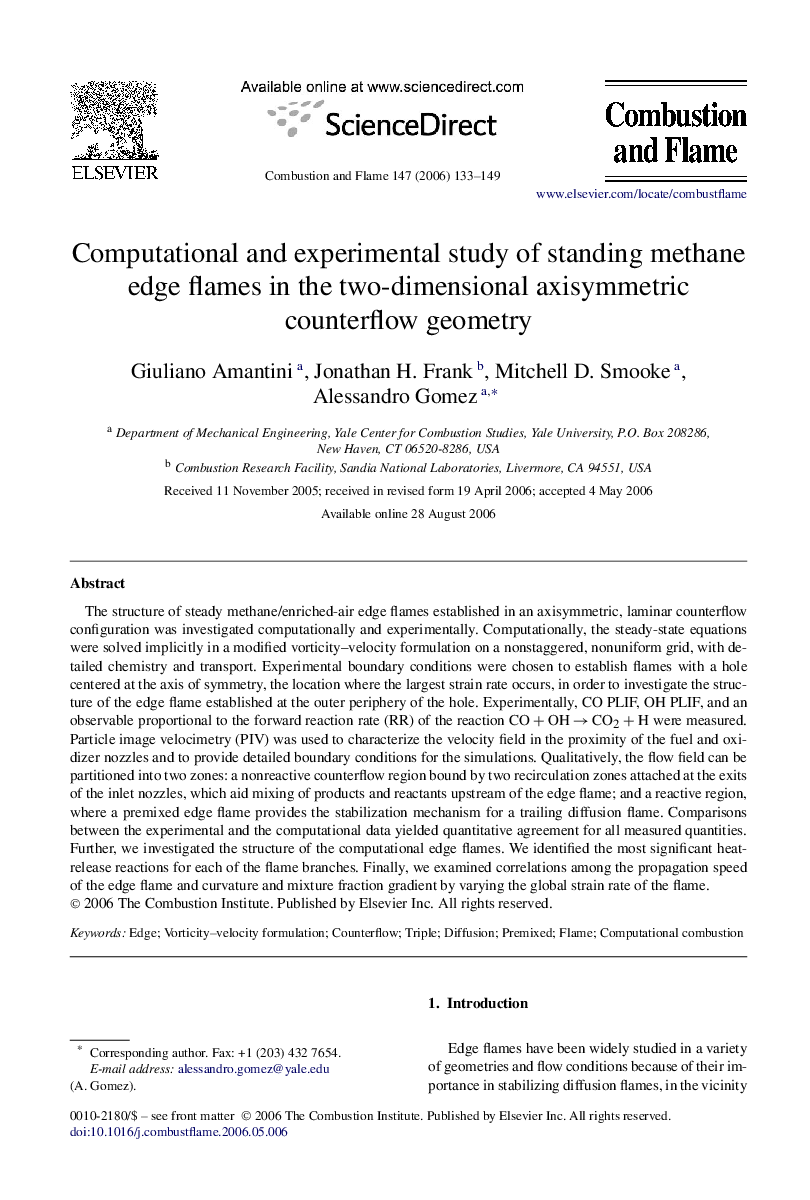| کد مقاله | کد نشریه | سال انتشار | مقاله انگلیسی | نسخه تمام متن |
|---|---|---|---|---|
| 169854 | 458049 | 2006 | 17 صفحه PDF | دانلود رایگان |

The structure of steady methane/enriched-air edge flames established in an axisymmetric, laminar counterflow configuration was investigated computationally and experimentally. Computationally, the steady-state equations were solved implicitly in a modified vorticity–velocity formulation on a nonstaggered, nonuniform grid, with detailed chemistry and transport. Experimental boundary conditions were chosen to establish flames with a hole centered at the axis of symmetry, the location where the largest strain rate occurs, in order to investigate the structure of the edge flame established at the outer periphery of the hole. Experimentally, CO PLIF, OH PLIF, and an observable proportional to the forward reaction rate (RR) of the reaction CO + OH → CO2 + H were measured. Particle image velocimetry (PIV) was used to characterize the velocity field in the proximity of the fuel and oxidizer nozzles and to provide detailed boundary conditions for the simulations. Qualitatively, the flow field can be partitioned into two zones: a nonreactive counterflow region bound by two recirculation zones attached at the exits of the inlet nozzles, which aid mixing of products and reactants upstream of the edge flame; and a reactive region, where a premixed edge flame provides the stabilization mechanism for a trailing diffusion flame. Comparisons between the experimental and the computational data yielded quantitative agreement for all measured quantities. Further, we investigated the structure of the computational edge flames. We identified the most significant heat-release reactions for each of the flame branches. Finally, we examined correlations among the propagation speed of the edge flame and curvature and mixture fraction gradient by varying the global strain rate of the flame.
Journal: Combustion and Flame - Volume 147, Issues 1–2, October 2006, Pages 133–149